Infant Torticollis
Infant Torticollis
by Jennifer Spak, RMT
What is it?
Torticollis (wry neck) is a symptom that causes a child’s chin to be rotated to one side and his head tilted to the other. There are many causes of torticollis but the one most commonly affecting infants is known as congenital muscular torticollis.
Congenital muscular torticollis is a condition that occurs at birth or up to 2 months of age. The postural change occurs when the sternocleidomastoid (SCM) muscle on one side of the baby’s neck becomes tighter than the other. This will cause a shift of the head and neck and cause the familiar tilted position.
Causes There are a few common reasons why the SCM muscle may have become contracted and cause your infant’s head to tilt to one side:
- The way your baby was positioned in the womb before birth
- Abnormal development of the SCM muscle
- Trauma or damage to the muscle and surrounding tissues during birth
- GERD (Gastroesophageal reflux disease)
Interrupted or compromised blood flow to the area can cause the deterioration of the tissue resulting in scaring and fibrosing of the muscle and fascial tissue. This shortens the muscles and surrounding tissue to the point of pulling the head into a new position. The right side is involved in 75% of cases.
What does it look like If the right sternocleidomastoid muscle is affected, the infant will hold his head with his chin rotated to the left and his head leaning to the right. In addition to the head posture, you may be able to feel a lump in the affected area, which is usually most noticeable between 2 and 8 weeks of age. Unlike acquired torticollis, congenital muscular torticollis is usually painless.
Functional Complications of Torticollis Although pain may not be a factor, you may experience other difficulties with your infant.
- Breastfeeding latches may be challenged due to the inability for the infants head to be held in a correct position. Efficiency and comfort may be affected for both mom and baby.
- Digestive changes; There has been links of torticollis to GERD. Increased gas, bloating, difficulties burping and pain may be a result of the restricted tissues through the neck, chest and abdomen.
Treatment Congenital muscular torticollis usually improves with range of motion and stretching exercises as well as Myofascial Release massage, but it can lead to positional plagiocephaly (flattened head) and facial asymmetry if your child’s head lies in the same position all of the time. If it isn’t quickly improving, then your child may need to be evaluated by a qualified Registered Massage Therapist or Physiotherapist. Treatment of the affected tissues as well as compensatory tissues is vital. You should also be given helpful home care tips to encourage stretching and movement in the restricted ranges. Early manual therapy can increase the speed of recovery and the return to normal mobility to the head and neck. In cases that aren’t improving by 12-18 months, further medical intervention may be required.
Jennifer Spak R.M.T
Myofascial Release Therapist
Newell Physiotherapy Clinic
500-595 Montreal Road
613.746.8223
www.newellphysiotherapy.ca
_____________________
Comments:
Colic
You have the skills to help your child. Every child should have what we are suggesting and what is particularly good for colic type situations, restlessness and reflux is a very light respiratory diaphragm release, thoracic inlet release and a very light cranial compression with some traction. If the child starts to unwind go with them. Do this repeatedly, preferably once or twice a day and it should make an almost immediate, remarkable improvement.
Joyce Patterson, PT
Myofascial Healing Sanctuary/Malvern Myofascial Treatment Center
______________________
I agree, I have found many of my newborn patients with symptoms of reflux also have torticollis and diaphragm restrictions and usually un-level pelvis, often also having constipation problems. If you notice your baby is a very shallow, upper respiratory breather, and diaphragm tends to retract excessively with inspiration or does not move evenly on both sides, that is likely the case. Even gentle leg and arm pulls may help. If you have taken the peds course, check out the pectoral release and iliopsoas release.
Sheri Brimm, PT

